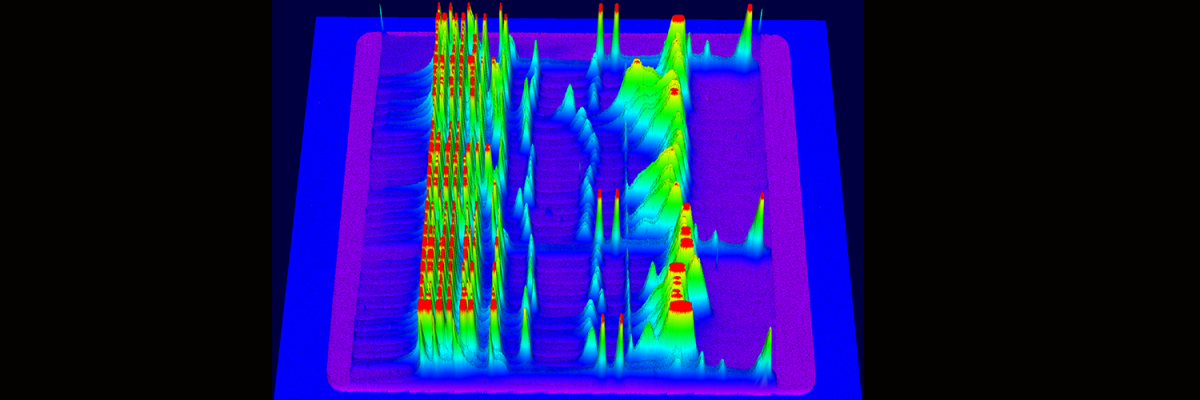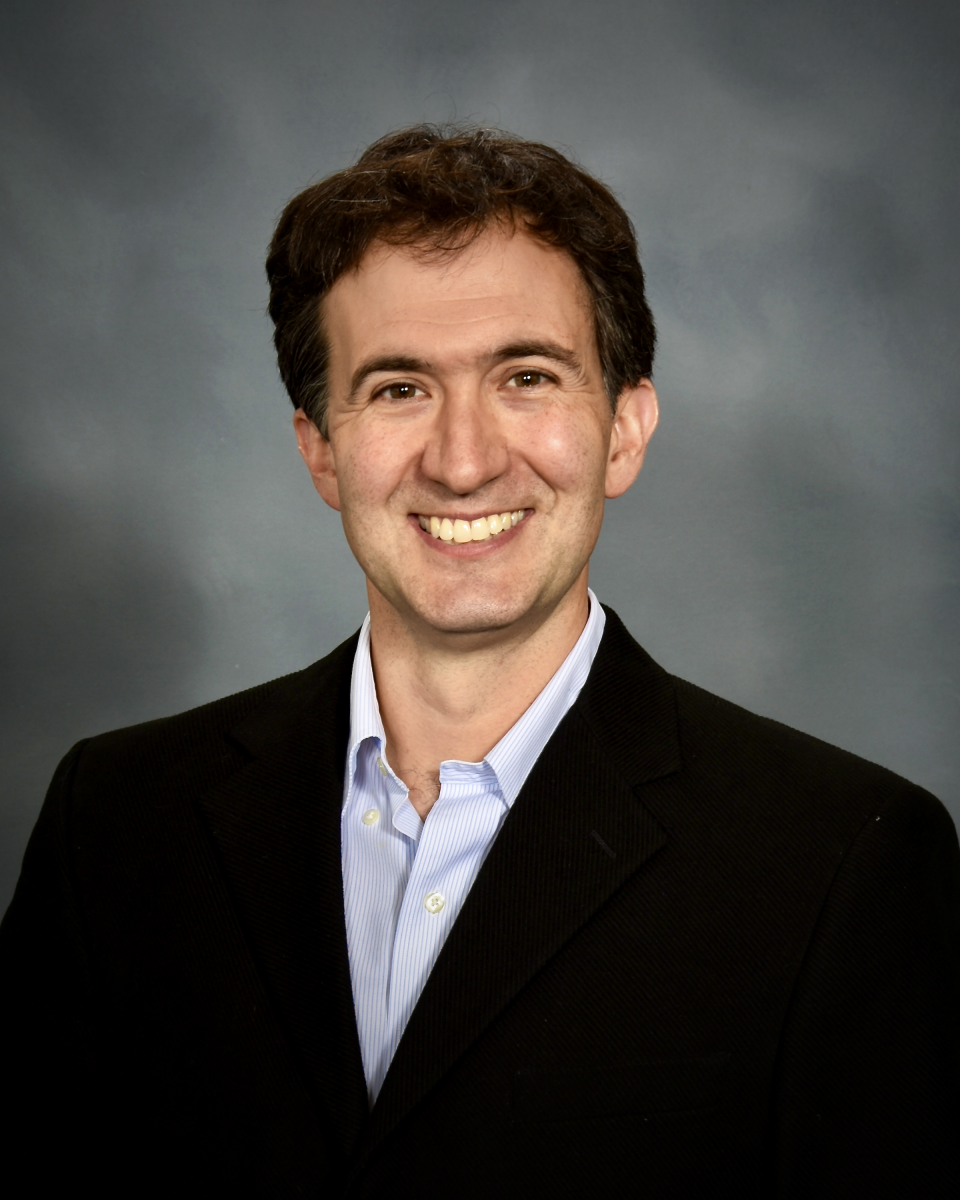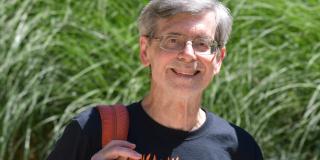
Biologist David Zappulla explores an elusive substance that helps protect DNA, and he blazed his own pathway early on
For some, the choice of a calling can be a lengthy task involving trial and error, soul searching, the balancing of diverse interests and talents, and serial major switching.
 On the other hand, when David Zappulla opted for biology as an undergraduate student at Middlebury College it seemed preordained. “My interest in biology goes back to before I had metacognition,” Zappulla reports. And if Zappulla’s career direction wasn’t completely predetermined by nature, nurture was there to seal the deal.
On the other hand, when David Zappulla opted for biology as an undergraduate student at Middlebury College it seemed preordained. “My interest in biology goes back to before I had metacognition,” Zappulla reports. And if Zappulla’s career direction wasn’t completely predetermined by nature, nurture was there to seal the deal.
“My mother is a developmental child psychologist, and she was pursuing her PhD while I was very young,” Zappulla recounts. “As a kid, she sometimes studied me, and my fellow inquisitive friends, in her developmental cognition research lab. I was fascinated when, at one point at least, she monitored our brainwaves while we solved puzzles. I also remember when I was around seven feeding differently colored food to ducks at the local mill pond to test if the ducks had preferences. I was connected to the scientific process early on.”
Zappulla, an assistant professor of molecular biology, has done groundbreaking research in genetics, working under the tutelage of not one, but two Nobel prize-winning scientists. At Lehigh, he’s studying how chromosomal DNA in the nuclei of cells is maintained and protected from damage. His fundamental findings from studying yeast could eventually lead to lifesaving therapies for cancer in humans, and improve our understanding of aging.
Chromosomes in the nucleus of every cell in our body are made of DNA and carry our genetic blueprint. Caps on the ends of chromosomes, called telomeres (TELL-oh-meers), are vital to the wellbeing of chromosomes, protecting their ends from fraying. “If you can't maintain DNA ends, you have a built-in cell mortality timer,” Zappulla explains.
When the double helix of DNA is replicated as part of the normal processes of growth or regeneration, the end of one of the DNA strands is left uncopied, a phenomenon known as the end-replication problem. But this problem, proposed a half-century ago, left unexplained just what was salvaging the stray strands and keeping them from deteriorating. It was posited that there must be some substance restoring worn telomeres, but none had been found until what turned out to be a very merry Christmas day in 1984, when graduate student Carol Greider noticed telltale activity in one of her samples, identifying the existence of telomerase (tell-AH-mer-ace).
“This was a really big deal,” says Zappulla. “It goes right to the central dogma of molecular biology—how DNA works, how genomes are assembled, and how genetic information is inherited.”
It was such a big deal that the discovery won the 2009 Nobel Prize in Medicine for Greider, her mentor Elizabeth Blackburn, and colleague Jack Szostak. Zappulla later ran his lab in Greider’s department at Johns Hopkins University.
Zappulla’s current research is focused on the way telomerase works its magic. His group is studying how telomerase appears and acts at the right place and time in baker’s yeast, an organism famous for expediting genetic research that also has surprising genomic parallels with humans.
Telomerase is an enzyme—a substance that can trigger a specific chemical reaction—that roams around the nucleus with a directive to find damaged chromosome ends and fix them up by repairing the protective telomeres. “Telomerase progressively adds a bit to the end of one chromosome, and repeats the process maybe 20 times before moving on to find another shortened telomere.” What isn’t fully understood is how telomerase finds and targets the telomeres in need of rebuilding.
This is where Zappulla’s work comes in. His lab has identified a key functional connection between two proteins, called Ku and Sir4, showing that they direct telomerase to where it’s needed. “The telomerase enzyme is essentially floating around in the nucleus. Our model is that Ku, as part of telomerase, and Sir4, as part of the telomere, bind together preferentially at short telomeres, thus recruiting telomerase to start making the eroded ends longer,” Zappulla explains. “That’s really exciting, because the mechanism by which telomerase is recruited to elongate the telomeres is a holy grail in the field of molecular biology.” Zappulla received a five-year, $1.7 million grant to pursue his research into telomere maintenance from the National Institutes of Health (NIH) in 2017, and his team’s work is currently ongoing.
Telomerase is turned off in most cells early in human lifespan—with the notable exception of some stem cells—and from that point on our telomeres are slowly worn down. Because of that, telomeres are a strong indicator of age. “More precisely, telomere length is an estimation of how old our bodies think they are,” says Zappulla. But there is a yin-yang dynamic when it comes to telomerase: longevity is enhanced by its maintenance of telomeres and promotion of cell growth, but cancer can alternatively feed off it too. Because of this, there is a close correlation between stem cells and the more malignant cancers. “This is huge for health, because 90% of human cancers have aberrantly activated telomerase involved,” Zappulla notes. “If you’re a dangerous cancer cell, you keep on reproducing without control and take over the body. If you now have telomerase back on the scene where it shouldn’t be, it stops the internal timer that would otherwise be ticking away due to telomere erosion, thus providing the potential for limitless cell proliferation and tumor formation.”
Zappulla’s research into telomerase began when he was a post-doctoral fellow at a Howard Hughes Medical Institute laboratory at the University of Colorado, Boulder. His adviser there, Thomas Cech, won the Nobel Prize in Chemistry in 1989 for discovering that RNA can enzymatically catalyze reactions, which led to the modern biological theory for the origin of life.
“Science is usually done standing atop the shoulders of the giants before us. I’ve been incredibly lucky to have worked with inspiringly smart mentors, who have also been caring and generous,” says Zappulla.
At Boulder, revered as a mecca for RNA research, Zappulla took on a project analyzing the complex strand of RNA upon which the telomerase enzyme is built. His goal was to understand its intricate structure within the cell. “The first thing I did was use a computer program to try to predict its overall folded architecture. It was commonly thought that this was a bad idea, because the algorithm’s accuracy averages 70%, but I thought, why not try?” Cech agreed, but many of the RNA experts at Boulder were skeptical. “Eventually, as experimental data mounted supporting the model, I was able to convince them that it represented the structure found in nature.” With the aid of the computer program and encouraging experimental results, Zappulla soon successfully modeled the structure of the entire big RNA. The paper describing the findings by Zappulla and Cech in 2004 helped launch Zappulla’s independent researcher career, and was the basis for his receipt of an “Pathway to Independence” award from the National Institutes of Health in 2006.
Besides Zappulla’s early inclination for the sciences, a love of the humanities and arts was also cultivated in his family’s home. For instance, Zappulla’s father, Elio, wrote a verse translation of Dante’s Inferno, and was a professor of English and Romance languages for decades. “My dad is a word fanatic. I guess some of that rubbed off on me,” says Zappulla. At Middlebury College, Zappulla combined his love of nature with his penchant for poetry to create his own minor concentration in literature and the environment. “In terms of the unification of the humanities and sciences, I come from a family with diverse interests that resided in a university community, so I was frequently involved in stimulating conversations. That was probably a natural training ground that led me to explore both outlooks, as well foster my desire to integrate them.”
In recent months, Zappulla has, unsurprisingly, been thinking more about the role of scientists and educators in a current environment that often finds truth and science under siege. “I think President Obama has it right, we’re dealing with widespread ‘truth decay.’ The central focus of a graduate course that I teach is critical thinking, and I am worried about what happens when this skill is not practiced widely by citizens in society,” Zappulla says. “Higher education has a crucial role in this, but it also really needs to be part of the discussions we are having about K-12 education. Perhaps the most critical defense for a democratic society is cultivating critical thinkers from an early age. That’s the vaccine for a lot of our problems right now.”






